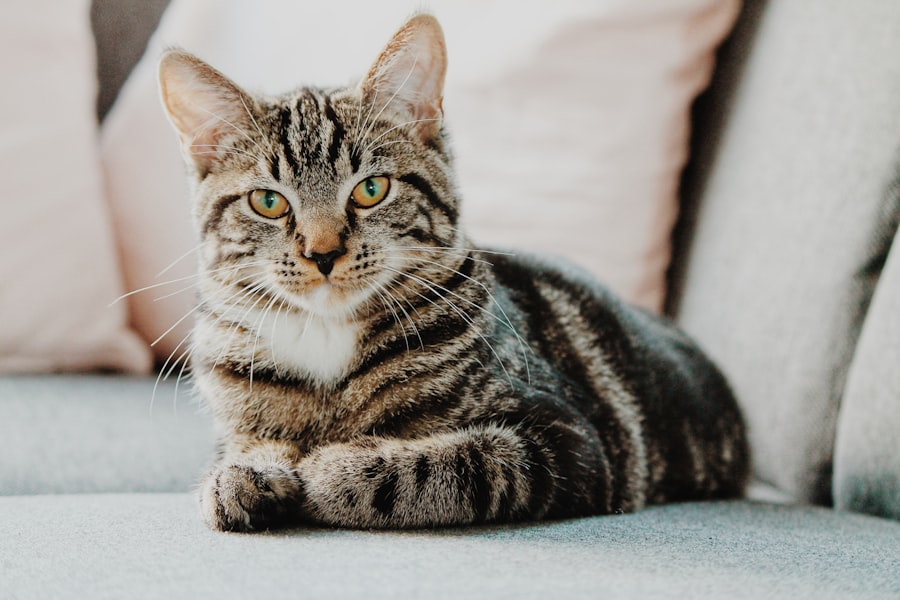Choosing the Right Food Bowl: A Guide for Pet Health and Comfort

Selecting an appropriate food bowl for your pet is essential for their health and well-being. The food bowl serves more than just a container; it significantly influences eating habits and can impact various aspects of your pet’s health. A well-chosen bowl can help prevent digestive issues, encourage proper posture during meals, and reduce the risk of health problems such as bloat in dogs.
The material and design of the bowl also affect your pet’s comfort and enjoyment while eating. The size and shape of the food bowl are important factors to consider. Shallow, wide bowls are ideal for pets with flat faces, like pugs or bulldogs, as they allow comfortable eating without straining the neck and shoulders.
Deep, narrow bowls may be more suitable for pets with long ears, such as basset hounds, to keep their ears from dipping into the food. The bowl’s material also impacts the eating experience. Stainless steel bowls, for example, are durable, easy to clean, and resistant to bacteria, making them a hygienic choice for pet meals.
By carefully selecting the right food bowl, pet owners can promote their animal’s health and ensure a positive mealtime experience. Considering factors such as bowl size, shape, and material can contribute to the overall well-being of your pet.
Key Takeaways
- Choosing the right food bowl can impact your pet’s health
- Factors to consider include material, size, and design
- Different types of food bowls offer various benefits for your pet
- Proper cleaning and maintenance is essential for your pet’s health
- Ensure your pet’s comfort during mealtime for a positive feeding experience
- Avoid common mistakes like using the wrong size or material for your pet’s food bowl
- High-quality food bowls can be found at pet stores, online retailers, and specialty shops
Factors to Consider When Selecting a Food Bowl for Your Pet
Size and Breed Considerations
The size and breed of your pet are crucial factors to consider when choosing a food bowl. Larger breeds require a larger food bowl to accommodate their size and appetite, while smaller breeds benefit from a smaller, more shallow bowl to prevent overeating.
Shape and Comfort
The shape of the food bowl is also important to consider. Pets with flat faces require a wider, shallow bowl to prevent strain on their neck and shoulders, while pets with long ears benefit from a deeper, narrower bowl to prevent their ears from dipping into their food.
Material and Design
The material and design of the food bowl are also essential factors to consider. Stainless steel bowls are a popular choice due to their durability, ease of cleaning, and resistance to bacteria. Ceramic bowls are heavy and less likely to tip over, but may be prone to chipping or cracking. Plastic bowls should be avoided as they can harbor bacteria and cause allergic reactions in some pets. Additionally, consider a bowl with a non-slip base to prevent tipping or sliding during mealtime.
Different Types of Food Bowls and Their Benefits

There are various types of food bowls available for pets, each with its own benefits and considerations. Stainless steel bowls are a popular choice for pet owners due to their durability, ease of cleaning, and resistance to bacteria. They are also less likely to harbor odors or stains compared to other materials.
Additionally, stainless steel bowls are often dishwasher safe, making them convenient for pet owners to maintain. Ceramic bowls are another option that is heavy and less likely to tip over during mealtime. They also come in a variety of designs and colors, making them a stylish choice for pet owners.
Another type of food bowl that is gaining popularity is elevated feeders. These feeders are designed to raise your pet’s food and water dishes off the ground, which can help promote better posture during mealtime and reduce strain on your pet’s neck and shoulders. This can be particularly beneficial for older pets or those with arthritis or joint issues.
Additionally, slow feeder bowls are designed with ridges or obstacles inside the bowl to slow down your pet’s eating pace. This can help prevent digestive issues such as bloating or vomiting that can occur from eating too quickly. Overall, there are various types of food bowls available for pets, each with its own benefits and considerations.
Considering your pet’s specific needs and preferences can help you choose the best option for their health and comfort during mealtime.
How to Properly Clean and Maintain Your Pet’s Food Bowl
| Step | Description |
|---|---|
| 1 | Wash the food bowl with hot, soapy water after each meal |
| 2 | Rinse the bowl thoroughly to remove all soap residue |
| 3 | Sanitize the bowl at least once a week with a mixture of water and vinegar |
| 4 | Dry the bowl completely before adding new food |
| 5 | Inspect the bowl regularly for any signs of wear or damage |
Properly cleaning and maintaining your pet’s food bowl is essential for preventing the growth of bacteria and ensuring your pet’s health and well-being. It is recommended to wash your pet’s food bowl after each meal with hot water and mild dish soap to remove any leftover food particles or residue. Additionally, you should thoroughly rinse the bowl to ensure all soap is removed before allowing your pet to use it again.
It is important to avoid using harsh chemicals or abrasive cleaners on your pet’s food bowl, as these can leave behind harmful residues that can be ingested by your pet. Furthermore, it is important to regularly inspect your pet’s food bowl for any signs of wear or damage. Cracks or chips in ceramic bowls can harbor bacteria and should be replaced immediately.
Stainless steel bowls should be checked for any signs of rust or corrosion, which can also pose health risks to your pet. Additionally, if you notice any lingering odors or stains in your pet’s food bowl, it may be time to replace it with a new one. Overall, properly cleaning and maintaining your pet’s food bowl is essential for preventing the growth of bacteria and ensuring your pet’s health and well-being.
Tips for Ensuring Your Pet’s Comfort During Mealtime
Ensuring your pet’s comfort during mealtime is essential for promoting healthy eating habits and overall well-being. One way to ensure your pet’s comfort during mealtime is by choosing the right food bowl that suits their specific needs and preferences. For example, pets with flat faces may benefit from wider, shallow bowls to prevent strain on their neck and shoulders, while pets with long ears may require deeper, narrower bowls to prevent their ears from dipping into their food.
Additionally, elevated feeders can help promote better posture during mealtime and reduce strain on your pet’s neck and shoulders. Another way to ensure your pet’s comfort during mealtime is by establishing a consistent feeding schedule. Pets thrive on routine, so feeding them at the same time each day can help reduce anxiety and promote healthy eating habits.
Additionally, providing a quiet and calm environment during mealtime can help reduce stress and distractions for your pet, allowing them to focus on their food. Finally, offering praise or rewards for good behavior during mealtime can help create a positive association with eating and reinforce healthy eating habits. Overall, ensuring your pet’s comfort during mealtime is essential for promoting healthy eating habits and overall well-being.
Common Mistakes to Avoid When Choosing a Food Bowl for Your Pet

Avoiding Plastic Bowls
One of the most significant errors pet owners make is using plastic bowls. These can harbor bacteria, which can lead to allergic reactions in some pets. Over time, plastic bowls can become scratched, creating an ideal environment for bacteria to thrive.
Choosing the Right Material
Instead, opt for stainless steel or ceramic bowls that are durable, easy to clean, and resistant to bacteria. These materials ensure a safe and healthy eating experience for your pet.
Selecting the Right Size and Shape
Another common mistake is adopting a one-size-fits-all approach when selecting a food bowl. Different breeds and sizes of pets have unique needs when it comes to their food bowls. For instance, larger breeds require larger bowls to accommodate their size and appetite, while smaller breeds benefit from smaller, more shallow bowls to prevent overeating. Pets with flat faces need wider, shallower bowls to prevent strain on their neck and shoulders, while those with long ears require deeper, narrower bowls to prevent their ears from dipping into their food.
Where to Find High-Quality Food Bowls for Your Pet
High-quality food bowls for your pet can be found at various retailers both in-store and online. Pet specialty stores often carry a wide selection of high-quality food bowls made from durable materials such as stainless steel or ceramic. These stores may also have knowledgeable staff who can help you select the best food bowl for your pet based on their specific needs and preferences.
Additionally, online retailers such as Amazon or Chewy offer a wide variety of food bowls for pets in various sizes, shapes, and materials. Another option for finding high-quality food bowls for your pet is through independent artisans or small businesses that specialize in handcrafted pet products. These artisans often create unique and stylish food bowls that are both functional and aesthetically pleasing.
Additionally, purchasing from independent artisans or small businesses supports local craftsmanship and ensures that you are getting a high-quality product that has been made with care and attention to detail. Overall, high-quality food bowls for your pet can be found at various retailers both in-store and online, allowing you to choose the best option for your pet based on their specific needs and preferences.
FAQs
What are the different types of pet food bowls available?
There are various types of pet food bowls available, including stainless steel, ceramic, plastic, and silicone. Each type has its own advantages and disadvantages in terms of durability, ease of cleaning, and safety for pets.
What are the benefits of using a stainless steel food bowl for pets?
Stainless steel food bowls are durable, easy to clean, and resistant to bacteria and odors. They are also non-toxic and safe for pets to use.
Are ceramic food bowls a good choice for pets?
Ceramic food bowls are a popular choice for pet owners due to their aesthetic appeal and heavy weight, which prevents pets from tipping them over. However, they can be prone to chipping and cracking, and may not be suitable for pets who like to chew on their bowls.
Is it safe to use plastic food bowls for pets?
Plastic food bowls are lightweight and affordable, but they can harbor bacteria and may contain harmful chemicals such as BPA. They are also more prone to scratches, which can harbor bacteria and lead to potential health issues for pets.
What are the advantages of using silicone food bowls for pets?
Silicone food bowls are lightweight, collapsible, and easy to clean. They are also non-toxic and safe for pets to use. However, they may not be as durable as stainless steel or ceramic bowls.
How can I choose the right food bowl for my pet?
When choosing a food bowl for your pet, consider factors such as the material, size, and design. It’s important to select a bowl that is easy to clean, durable, and safe for your pet to use. Additionally, consider your pet’s specific needs and behaviors, such as whether they are prone to tipping over their bowl or chewing on it.


Recent Comments